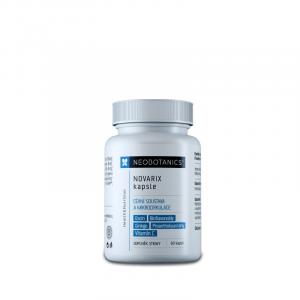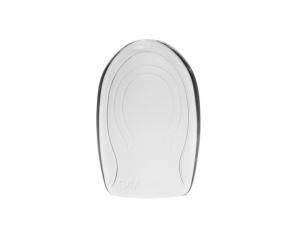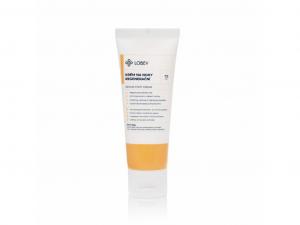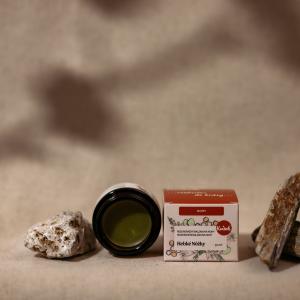
Nail Fungus - How to Recognize and Treat It

Nail fungus, medically known as onychomycosis, is a common health issue that affects many people worldwide. Despite its prevalence, many people are unaware of how to properly recognize, treat, or prevent it.
Nail fungus is an infection that affects the nail plate, nail bed, or both. This infection is caused by various types of fungi, including dermatophytes, yeasts, and molds. It most commonly occurs on toenails, but it can also affect fingernails.
Symptoms of Nail Fungus
Typical symptoms include a change in nail color, which can be yellow, brown, white, or green. Other symptoms are thickening or deformation of the nail, brittleness or crumbling, unpleasant odor, and pain or discomfort, especially when walking or wearing shoes. Nail fungus may start as a small white or yellow spot under the tip of the nail. As the infection spreads deeper into the nail, it can cause thickening and deformation. This infection is caused by various types of fungi, including dermatophytes, yeasts, and molds. It most commonly occurs on toenails, but it can also affect fingernails. Early diagnosis and treatment are crucial for successfully managing nail fungus and preventing its unpleasant consequences.
Once you notice suspicious symptoms, it is important to visit a doctor who can confirm the diagnosis. The doctor may perform a visual examination of the nail and take a sample that will be sent to a laboratory for analysis. This is key to determining the specific type of fungus and establishing appropriate treatment.
Try our natural products
How Does Nail Fungus Spread?
Nail fungus is highly contagious and can easily spread in warm and humid environments, such as pools, showers, or gyms. The infection can also spread through direct contact with an infected person or by sharing items like towels, shoes, or nail tools.
Risk Factors
There are several risk factors that increase the likelihood of developing nail fungus. One of them is age, as older people are more susceptible to fungal infections due to slower nail growth and reduced blood circulation. Another factor is excessive sweating, which can create an ideal environment for fungal growth. Wearing closed footwear that does not allow ventilation also increases the risk of developing nail fungus.
Any damage to the nail or surrounding skin can facilitate the penetration of fungi and subsequent infection. Health conditions are also a significant factor, as people with diabetes, weakened immune systems or circulatory problems are more susceptible to fungal infections. All these factors can contribute to the development of nail fungus, so it is important to be aware of them and take preventive measures. Proper nail care, wearing breathable shoes, and keeping feet dry can help minimize the risk of this unpleasant infection. If you suspect nail fungus, do not hesitate to seek professional help for timely diagnosis and treatment.
Try our natural products
Treatment of Nail Fungus
There are several ways to treat nail fungus. The first method is topical medications, which include antifungal creams, ointments, or nail polishes. These medications can be effective in mild cases of fungus and are applied directly to the affected nail and surrounding skin. Another option is oral antifungals, which are prescribed by a doctor for more severe cases. These medications work systemically and are more effective, but they can have side effects, such as liver issues or interactions with other medications.
A newer method of treatment is laser therapy, which uses laser light to destroy fungal cells. This method is usually painless and has minimal side effects, but it can be costly and may not always be covered by insurance. In severe cases, where other methods fail, surgical removal of the infected nail may be necessary. After the nail is removed, topical treatment can be applied directly to the nail bed.
Each of these methods has its advantages and disadvantages, and the choice of appropriate treatment should be consulted with a doctor. Timely and proper treatment is key to successfully managing nail fungus and preventing its unpleasant consequences.
Preventing Nail Fungus
Prevention is the best way to avoid nail fungus. Here are some tips to minimize the risk. Keep your feet dry and clean. After washing your feet, dry them thoroughly, especially between the toes, where moisture can easily get trapped and create ideal conditions for fungal growth. Wear breathable shoes and avoid tight and non-breathable footwear that can trap moisture. Rotating shoes is also important. Do not wear the same shoes every day, allowing them to dry out and eliminate moisture.
Try our natural products
Regular use of antimicrobial products, such as sprays or shoe powders, can help destroy fungi and bacteria that could cause an infection. Nail hygiene is also crucial. Regularly trim your nails and use sterilized tools to prevent the transfer of fungi or bacteria.
Finally, protection in public places is essential. Wear protective footwear in public showers, pools, and locker rooms, where the risk of contracting fungus is higher. These simple measures can help keep your nails healthy and minimize the risk of developing a fungal infection.
Try our natural products
What You Should Know About Nail Fungus
There are many myths about nail fungus. For example, is it true that vinegar or tea tree oil can help fight fungus? Although some home remedies may have mild antifungal properties, scientific evidence of their effectiveness is limited. Therefore, it is always better to consult treatment with a doctor. Nail fungus can be unpleasant and difficult to treat, but with timely diagnosis and the right approach, it can be successfully managed. Most importantly, preventive measures can significantly reduce the risk of developing this infection. Do you ever find it challenging to keep your nails healthy and clean? Remember that proper care and hygiene are key steps to preventing fungal infections. At any suspicious changes in your nails, do not hesitate to seek professional help.
























